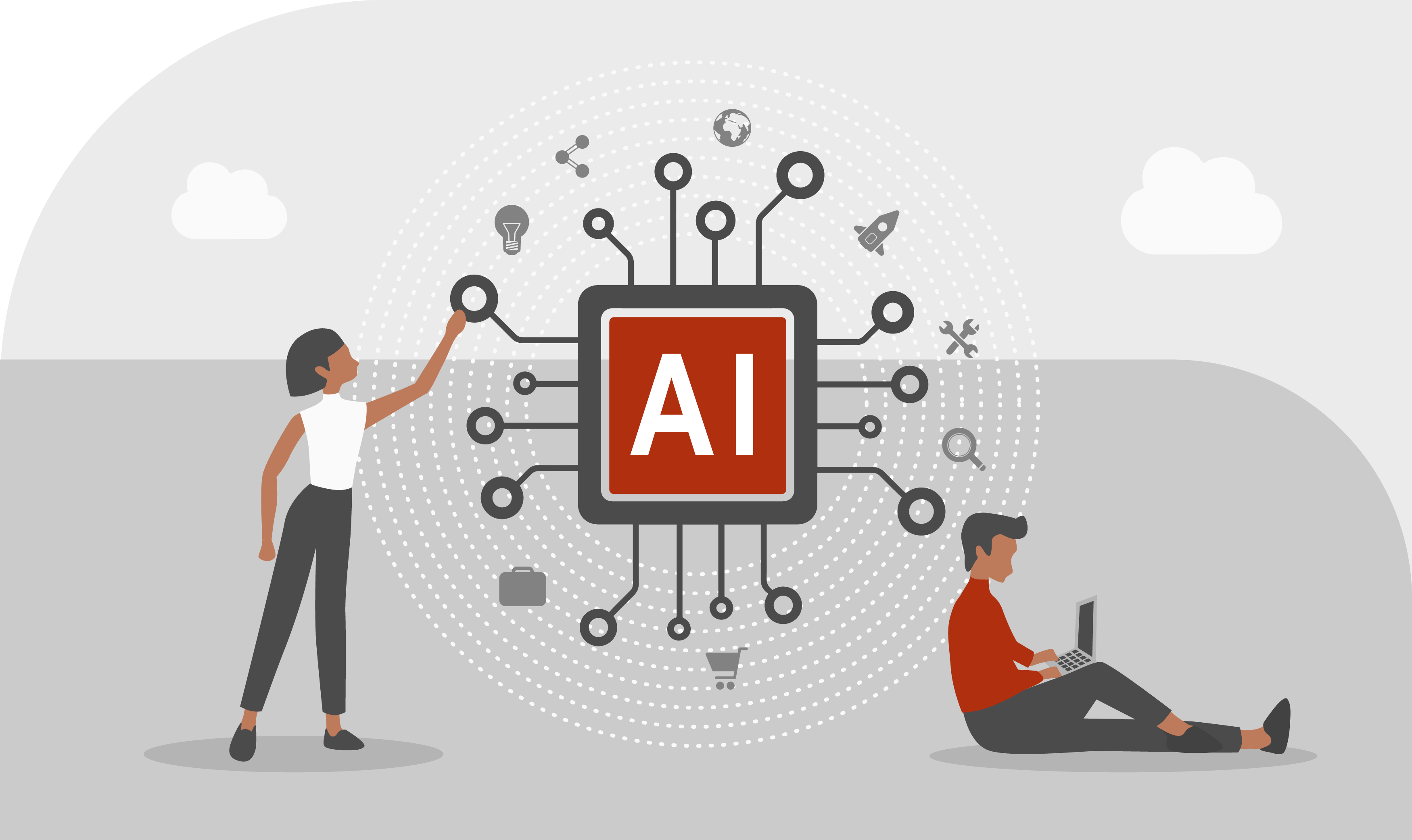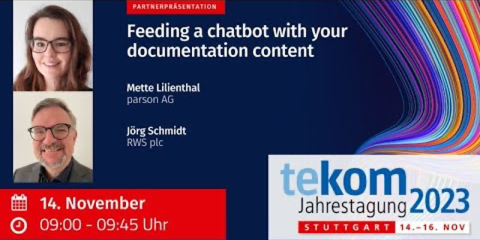Artificial intelligence for technical documentation
Use AI along your content supply chain
Artificial intelligence (AI) holds an enormous potential for industry and business, transforming companies and business processes. AI can streamline processes, increase efficiency, improve productivity, and unlock new business opportunities.
Artificial intelligence is used along the complete content supply chain – from authoring through assembly and publication of information to providing user assistance at different touchpoints. AI can generate and translate text, answer questions through chatbots, and provide tailored information to a specific target group.

Your AI model for technical documentation
We identify the AI use cases and benefits in your content supply chain and provide consulting on how to use AI-powered solutions and functions. This includes using Large Language Models at different points in the content supply chain, for example, in authoring processes or at different customer-facing touchpoints. This is how we work.
Your contacts
Artificial intelligence in technical documentation
Using artificial intelligence for technical documentation. This is how we work
- Analyze use cases: We analyze your use cases and requirements for using AI along the content supply chain.
- Review data and documents. We review your data and documents and prepare them for machine learning.
- Train language models. We train Large Language Models (LLM) with your customer-specific data so that the model efficiently supports your use cases.
- Verify AI integration. We test the integration with systems for creating and delivering technical documentation and product information.
Learn more about artificial intelligence for technical documentation in our FAQs.
FAQs – Frequently asked questions about AI for technical writing
What are the use cases for artificial intelligence (AI) in technical documentation?
AI is used for various purposes in technical documentation. Some are:
- Generate text automatically, from abstracts to full articles.
- Rephrase texts, for example, into a different language style.
- Translate text automatically.
- Answer user questions, for example, through a chatbot on a web portal.
- Generate images automatically.
- Analyze the behavior and knowledge of a target audience and deliver relevant and customized information.
How much data do we need to fine-tune a Large Language Model (LLM)?
The more data you have, the better. How much data you eventually need depends on the complexity of the language model you want to fine-tune and on your business needs. In general, you need high-quality data to provide enough examples for the model to make effective predictions. Use structured data in XML or JSON instead of unstructured formats such as PDF to fine-tune the LLM. We start each project with an analysis of your use cases and data to estimate the training data requirements.
Why train my own language model when ChatGPT is availabe?
ChatGPT and other generative AIs learn from information found on the internet including corporate websites, Wikipedia, and publications. As a result, the terminology and language styles used are diverse. When you fine-tune a language model, you can optimize training on your company's data, even if the underlying language model is generic. This makes the model's suggestions more specific and accurate, more in line with corporate terminology, and better suited to your products and documents. An independently trained language model can also be used in various AI-enabled applications.
A disadvantage of using a custom, fine-tuned model is the maintenance effort. Any changes in the underlying data and documents must be included in further fine-tuning. If the underlying Large Language Model, like GPT, is updated, this is not automatically reflected in your custom model.
What happens to my data?
During the project, we will work with you to determine where to store and process your data or documents for the language model . This means that your data will be stored where you prefer, for example only in Europe.
Is the language of the documents important?
No, but the biggest language models are available for English. There are now many models for other languages available, for example, German. We recommend that you start with your original language.





